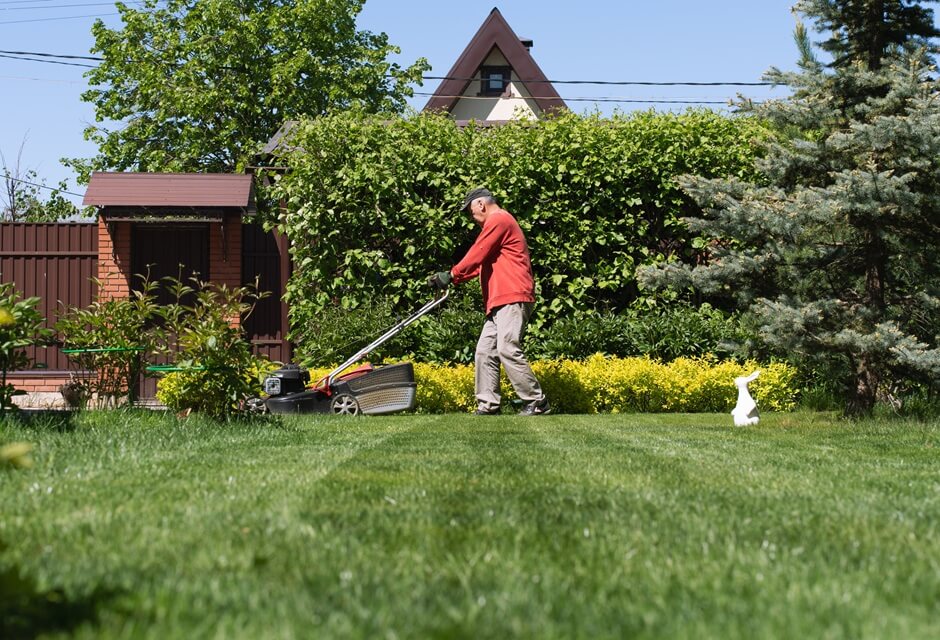
Many homeowners take pride in maintaining a well-manicured lawn, but knowing how often to mow the lawn can be tricky. Mowing is essential to keeping your lawn healthy and attractive, but mowing too frequently or too infrequently can lead to problems.
The frequency of lawn mowing depends on several factors, such as the time of year, your grass type, and the climate in your region. Here is an in-depth guide to help you understand how often you need to mow your lawn and how to establish the right lawn mowing frequency for your yard.
Factors That Affect Lawn Mowing Frequency
Several factors influence mowing frequency, including the time of year, grass type, weather, and local climate. In spring, mowing may be needed weekly, while summer typically requires every 7 to 10 days. Warmer climates like Florida may need more frequent mowing during the growing season, with longer intervals in cooler months. Other factors include:
1. Grass Type
Different grasses have varying growth rates. Cool-season grasses, like Kentucky Bluegrass and Fescue, grow quickly in spring and fall, while warm-season grasses, like Bermuda and Zoysia, thrive in summer. Knowing your grass type helps set the right mowing schedule.
2. Weather Conditions
Rain, temperature, and humidity levels all play a role in how fast your grass grows. After a heavy rain, for example, your lawn may grow quickly and require mowing sooner than usual. Conversely, during a dry spell, growth slows down, and mowing may be less frequent.
3. Fertilization And Watering
If you fertilize your lawn regularly or water it consistently, the grass may grow faster, requiring more frequent mowing. On the other hand, if you have a less fertile or drier lawn, mowing might not be as necessary. Using eggshells in your garden can be a homemade way to fertilize your lawn and avoid high yard fertilization costs.
4. Mowing Height
The height at which you mow your lawn affects how often you need to mow. Cutting your grass too short can weaken it, leading to more frequent mowings and increased vulnerability to pests and diseases, like brown patches in your lawn. Aim to leave the grass at a height of 2.5 to 3 inches for most lawns, which will help retain moisture and encourage deep root growth.
How Often To Mow Lawn In The Spring?
Mow your lawn every 7 to 10 days, depending on grass type and climate. Spring brings rapid growth, so you may need to mow more often, especially in warmer areas where mowing every 5 to 7 days may be necessary. Keeping the grass height between 2.5 and 3 inches is ideal, and avoid cutting more than a third of its height at once to prevent stressing the lawn.
How Often To Mow Lawn In The Summer?
Aim to mow your lawn every 7 to 10 days, but during summer, it may only need mowing every 10 to 14 days, especially in drought conditions. Grass growth slows due to higher temperatures and dryness, but mowing frequency will depend on grass type, rainfall, and weather conditions.
It is also important to mow when the lawn is not wet to avoid creating clumps or damaging the grass. Additionally, mowing during the cooler parts of the day — early morning or late afternoon — can help prevent heat stress on your grass. Raise the mower blades slightly during the hot summer months to avoid cutting the grass too short, which can lead to browning or damage to the root system.
How Often To Mow Lawn In Florida?
For most homeowners in Florida, the typical lawn mowing frequency is once
every 7 to 10 days during the peak growing season. During the cooler months (fall and winter), grass growth slows, so you may only need to mow every two weeks.
In warmer regions like Florida, mowing is needed more frequently, especially for warm-season grasses like St. Augustine, Bermuda, and Zoysia. It's best to mow in the early morning or late afternoon to avoid the midday heat, which can stress the grass and lead to uneven cuts.
By understanding how often to mow your lawn and adjusting your schedule accordingly, you can maintain a healthy, attractive lawn with the proper frequency throughout the year. Call today for a quote from Wisercosts' landscaping services to get professional help and make your grass even greener!
 Let a landscape architect give you an estimate on your project
Let a landscape architect give you an estimate on your project





 Member of the
Member of the 